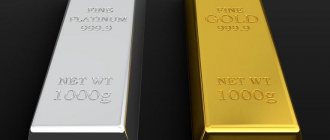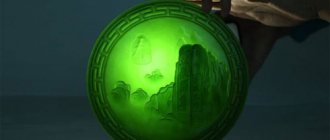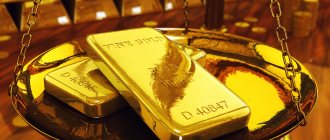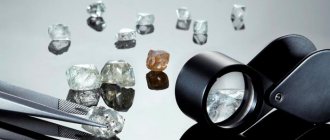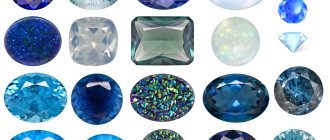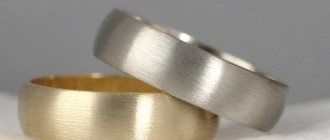The mineral hardness scale or Mohs mineralogical scale is compiled from reference samples according to the degree of relative hardness from 1 to 10. A qualitative ordinal indicator of the strength resistance of minerals included in this scale is determined by scratching. The mechanical ability of harder materials to scratch softer rocks determines the relative hardness of a particular type of mineral.
The 10 Mohs mineral elements are presented as reference samples and arranged in ascending order, allowing you to visually determine which mineral is harder. For example, talc occupies the first position in the table and is considered the softest among others presented on the scale. On the other side is a diamond, which, according to the “mineral strength” criterion, occupies the very top, that is, the 10th position on the Mohs scale and has no analogues in nature in terms of this indicator.
What is the Mohs hardness scale?
The Mohs scale is a system used to rank materials by their hardness, allowing classification using numbers from 1 to 10. It is used to compare the hardness of gems, metals and certain other materials and evaluate their relative durability.
The Mohs rating of a metal is based on how easily a sample can be scratched by other metals. For example, the hardness coefficient of gold is 2.5-3, which is significantly lower than the hardness coefficient of most other materials.
While graphite and some plastics stand at one end of the scale, having a value of 1, diamond, one of the hardest substances on Earth, is placed at the other end. It is worth 10 points.
Background
The method for determining the scratch resistance of minerals and the corresponding scale appeared only in the 19th century. The main contribution was made by the scientist after whom the table is named - Karl Friedrich Moos.
First attempts
Since ancient times, philosophers and alchemists have noticed that minerals differ from each other not only in color, but also in strength. Some literally crumble in your hands, while others even scratch metals.
Scientists of the Middle Ages tried to classify stones according to subjective impressions of their fragility . Then they began to use a file: they tried to saw the stone with it. If this worked, then the mineral was considered brittle; if not, it was considered hard.
This continued until, in 1811, Friedrich Mohs proposed to determine strength by scratching minerals with samples with known indicators .
Werner's merit
In 1722, a mathematician from France, Rene Reaumur, and in 1724, in Germany, Abraham Werner, expressed the idea of scratching stones with another mineral, recognized as the hardest of all rocks. But they did not complete the job, determining the strength of a small number of minerals. Werner began to systematize them not only by hardness, but also by color, smell, weight and even taste.
During his lifetime, all minerals were divided into 4 groups :
- Can be scratched with a fingernail.
- They can't be touched by a fingernail, but a knife makes a scratch.
- There is no trace left by the knife and no sparks appear.
- A metal knife leaves no mark, but sparks appear when exposed to flint.
Later, it was this method of scratching minerals with a standard of known strength that formed the basis for determining hardness by Mohs . Thus, Werner can be called the ideological inspirer of the creator of the table, but all the glory went to Mohs.
Mohs hardness scale for assessing the hardness of metals.
Here is a list of hardness coefficients for some metals that everyone is likely to encounter in their daily life, especially when coming into contact with jewelry:
- Tin: 1.5
- Zinc: 2.5
- Gold: 2.5-3
- Silver: 2.5-3
- Aluminum: 2.5-3
- Copper: 3
- Copper: 3
- Bronze: 3
- Nickel: 4
- Platinum: 4-4.5
- Steel: 4-4.5
- Iron: 4.5
- Palladium: 4.75
- Rhodium: 6
- Titan: 6
- Reinforced steel: 7-8
- Tungsten: 7.5
- Tungsten carbide: 8.5-9
Medicinal properties
For centuries, healers have studied the healing effects of sapphire on humans and are convinced that it can cure or alleviate many ailments. Lithotherapists and traditional healers advise using this stone to treat the following diseases (without deviating from the recommendations of doctors):
- diseases of the heart, kidneys, skin;
- bronchial asthma;
- diabetes mellitus;
- migraine.
Any type of sapphire helps to improve your health, the main thing is that the crystal is natural and without damage.
And yet there is “specialization”, that is, stones of a certain color are more effective for treating specific diseases:
- Yellow will help improve the functioning of the entire body, increase immunity, and relieve stress and depression.
Yellow sapphire has very strong energy, so you need to wear it periodically. If used continuously, a person may experience restlessness and anxiety.
- Blue can help with problems with the heart and blood vessels, headaches, inflammation, and dermatological diseases.
- Green will improve sleep (if you put the mineral under your pillow) and restore visual acuity after short sessions of contemplating the gem.
The healing properties of sapphire set in silver are enhanced.
For washing, compresses and washing of diseased areas of the body, inflammation, wounds, water infused with this mineral is used.
Preparation of healing sapphire water: at dawn, place the stone in the water and after a while it can be used.
Why is it important to know the hardness of metals?
When German geologist Friedrich Mohs created the scale we use today, he applied a simple principle to determine the hardness of any material: what materials can scratch it, and what materials it can scratch.
For example, platinum, which has a hardness of 4-4.5, can be scratched by all materials that have a higher Mohs scale. For example, topaz, which has a coefficient of 8, can alternately scratch any material that has a lower coefficient (for example, gold, the hardness of which is rated at 2.5-3 points).
From the table above you can see which metals can scratch others and which ones can scratch them. This is valuable information as it can tell you which precious metals can be stored together and which cannot.
Also, this information about the hardness of metals will help determine which products made from precious alloys are more reliable to wear.
ORIGIN
The most famous sapphire deposits are confined to pegmatites or placers and are located in the USA, Australia, Madagascar, India, Sri Lanka, Vietnam, Burma, Thailand and China. In Russia there are no large deposits in which sapphire can be mined on an industrial scale: its finds are confined to manifestations of blue corundum, in which transparent stones suitable for cutting are also found. Blue sapphire is found in the Urals and on the Kola Peninsula (Khibiny). Ural sapphires, as a rule, have a grayish tint, while Kola sapphires have a peculiar greenish tint with a deep cornflower blue color.
It is likely that the largest blue sapphire mined in nature was a stone accidentally discovered by radiologist Steve Mayer in the United States in the mid-1960s. While exploring abandoned quarries near the town of Canton (North Carolina) with a friend, he discovered a large fragment of bluish rock crystal. Mayer brought the stone to work, where he began using it as a paperweight. A few months later, one of the patients noticed the stone and advised Mayer to show it to a gemologist or jeweler. To the radiologist’s surprise, experts determined that a simple “piece of crystal” turned out to be a huge crystal of blue sapphire weighing just over three and a half thousand carats.
How to apply the hardness scale for metals.
When you decide to buy a product made of a precious metal, but are undecided about which material to choose, the Mohs hardness scale will help.
By comparing the coefficients, you will make a preliminary choice and be able to decide whether this product is also suitable for you in terms of price.
For example, platinum is much more durable than silver, and in general, harder ones last longer with constant wear. However, platinum is also much more expensive than silver, so you need to consider whether you are willing to pay the extra price for durability.
APPLICATION
Blue transparent sapphires are used in jewelry in the form of cuts. Star sapphires are usually cut as cabochons. Synthetic leucosapphires are used as raw materials for the manufacture of ophthalmic scalpels and eye lenses; for the production of high-strength optically transparent elements (windows for space stations, protective glass for optical equipment in rockets and aircraft, protective glass for screens in mobile phones, watches and cameras in the highest price segment); as substrates in microcircuits; in dentistry - for the production of aesthetic braces, in industry - for the production of nozzles for water jet machines. Unlike quartz, leucosapphire does not react with alkali metal vapors up to the highest temperatures, which is why high-pressure sodium lamp burners are mass-produced from artificial leucosapphire. Leucosapphires are also used in various fields of laser technology. Synthetic sapphire, activated with Ti3+ ions, is used as active elements in titanium-sapphire lasers.
Sapphire - Al2O3
| Molecular weight | 101.96 g/mol |
| origin of name | The origin of the name of the stone has not yet been precisely established |
| IMA status | valid |
Hardness of metal alloys.
The Mohs scale for each metal indicates the hardness in its pure state, i.e. without any other materials mixed with it.
However, in reality, almost all metals used in jewelry are combined with others to create a stronger or cheaper material.
For example, gold is often mixed with nickel, zinc, copper and other metals to give it extra hardness.
Likewise, when carbon is added to tungsten, which has a hardness rating of 7.5 in its pure form, the resulting tungsten carbide will have a hardness rating of 8.5-9 on the Mohs Hardness Scale.
MORPHOLOGY
It occurs in the form of barrel-shaped, dipyramidal and tabular pseudohexagonal crystals, separately disseminated grains and granular aggregates. The faces of prisms, dipyramids and pinacoids are often covered with rough oblique shading. Typically, fairly well-formed barrel-shaped, columnar, pyramidal and lamellar crystals are observed, sometimes reaching large sizes (up to a decimeter in diameter). The most common faces of the hexagonal prism {1120}, hexagonal dipyramids {2241}, {2243}, rhombohedron (1011} and pinacoid {0001}. Often the faces of prisms and dipyramids, as well as the faces of the pinacoid, are covered with oblique shading, and in other cases it is observed hatching in the horizontal direction due to twinning along the pinacoid.
Which stones are more valuable?
The value of each mineral varies depending on its significance.
The more valuable mineral is the one that is rare.
It's the same with minerals: the more they are used for different purposes, the more valuable that mineral becomes.
There are a number of minerals that are considered valuable due to their excellent properties and are used for various purposes such as the mining of platinum, gold and diamonds.
Before we move on, let me tell you something, my old sport.
Only between you and me.
if you want to buy a professional and high-quality hardness tester, visit our website testhardness.com. and please don't forget to ask for a coupon!
Keep this secret for me, will you?
Okay, let's move on.
Secondly, the procedure.
You can simply scratch the above mentioned household items on the mineral/stone whose hardness needs to be determined.
You start with soft objects, such as nails with a hardness of 2. Scratch your fingernail against the mineral you want to observe.
If a fingernail scratches a mineral, the mineral is expected to have a hardness of less than 2.
You can continue to use various household items to later check the appropriate mineral hardness.
However, if you can scratch the mineral on objects that have a higher hardness, such as a glass plate, this means that the mineral's hardness is greater than 5.5.
Who suits sapphire according to their zodiac sign?
Astrologers, studying the properties of this mineral, came to the conclusion that it suits almost every zodiac sign.
Ideally compatible with four zodiac signs:
- Sagittarius - men will become more determined and focused on winning; women are attractive and wise.
- Aquarius - his multifaceted inner potential will be released (in spirituality, in business, and even in eloquence).
- Leo and Aries - people born under these signs are characterized by intemperance and hot temper. The gem will reduce their ardor, which creates problems, and teach them to control their behavior. It will also help you find your purpose and achieve success.
Sapphire also has a positive effect
- Geminis will find true friends and useful business connections. For women it acts as a good antidepressant.
- It will bring self-confidence and peace of mind to Scorpio
- Virgo will become more sociable.
- Taurus , if he is responsible, the stone will help in business.
- Cancer , according to the horoscope, will bring health.
This gem does not affect Pisces and Libra - for them it is only a decoration.
Sapphire is contraindicated for Capricorn, who can be depressed and indifferent to everything.
There are many suitable stones for Capricorn, for example, garnet, onyx, spinel (blue).
You should wear sapphire intermittently (especially yellow) and only if it is undamaged - otherwise it will attract major troubles.
for people over 36 years old , since its patron Jupiter will revolve around the Sun three times .
The magical properties of sapphire
This stone can bring out the best qualities in a person. His magic will help preserve love and family. This gem is considered a symbol of friendship, sacrifice, and good attitude towards people.
Rulers of nations wore sapphire on their crowns and around their necks to protect them from envious people and to avoid making mistakes.
It was believed that if the mineral was set in gold, it would help control people.
Magical properties of colored sapphires:
- White will help you achieve your goal. This is an attribute of people who strive for spiritual perfection.
- Yellow will drive away anxiety and attract inspiration to creative people.
- Green is able to bring peace to conflicting families. Selfish natures are made kind and sensitive.
- Blue will help improve your thinking process, activate superpowers, and even open your “third eye.”
- Blue attracts luck, love, and helps with travel.
If the person who used the blue sapphire sells it or gives it to someone, the stone will still protect its owner even from a distance.
- Pink will help you find what the owner dreams of.
- Black - acts as a real wealth magnet. Helps in making the right decisions.
- Star helps to recognize lies and hypocrisy. Retains the properties that it accumulated under the previous owner. In ancient times, stones in which three intersecting rays form a six-pointed star were considered especially powerful magically; they were associated with three great forces: Faith, Hope, Love.
Each of these stones serves only good deeds. If the owner has wicked intentions and actions, he can send the negative to him.
